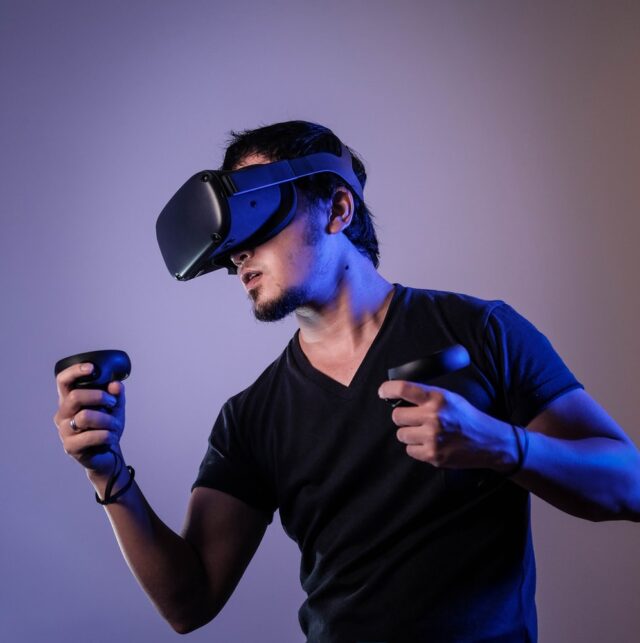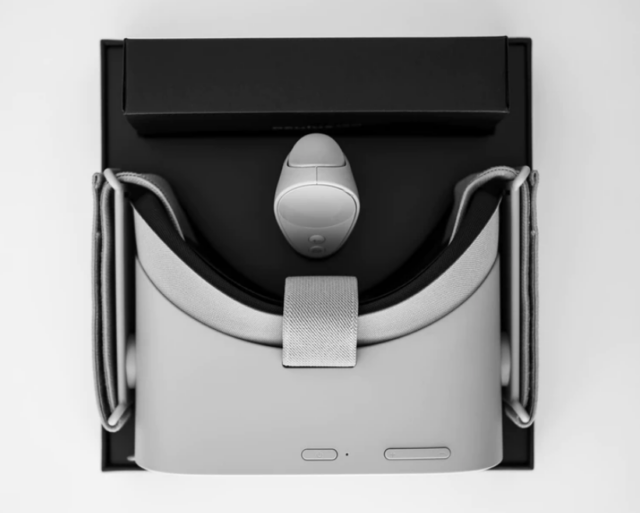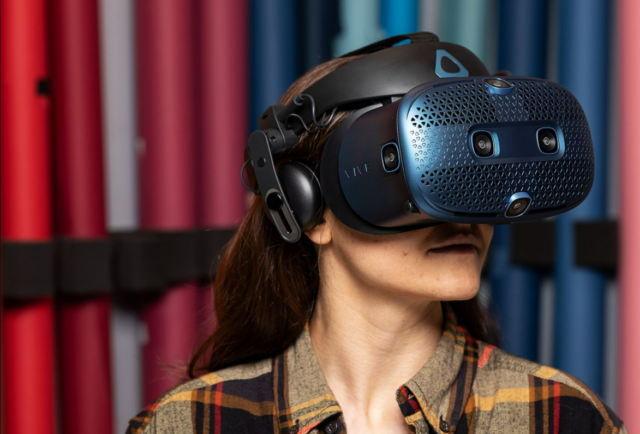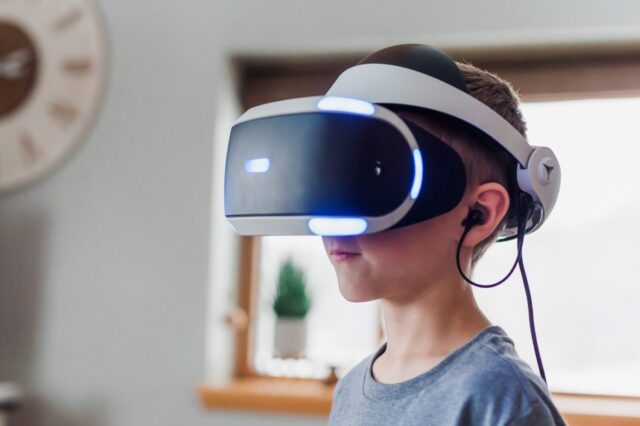
When the very first VR headset came out in 1968, designed for The Sword of Damocles game, there was a clear emphasis on entertainment.
In the following decades, VR found its footing with advanced fields of science and technology. Users could perform difficult tasks related to aeronautics and beyond via carefully designed virtual worlds.
The Oculus launcher makes it easier to access a variety of VR applications and content, giving consumers a smooth and intuitive virtual reality experience.
However, by the 90s, the group Virtuality had found a way to mix commercial interests with VR entertainment. Users could purchase headsets, then game in Virtuality’s dedicated arcade. The whole concept was rudimentary but would provide the backbone for Oculus’s first VR headset, released in 2012.
Today, the most recognizable headsets have either a cord running to an external device or else use untethered headsets powered by remote technology. As with The Sword of Damocles, new VR headsets released by Oculus (owned by Facebook), HTC, and Sony all focus on entertainment.
The variety of VR experiences is greatly expanded for those with a connection to an external device. While VR companies are creating their own unique gaming platforms like Sony’s PSVR, other forms of online entertainment have also released mind-bending VR opportunities.
Unsurprisingly, popular video game franchises from Fortnite to Halo are all gearing up for VR updates, but casino games have also shifted toward VR. For example, Pokerstars offers a VR experience that takes gamers into a futuristic realm where they can play strategy games.
There are other unique opportunities available for VR users, too. Paradiddle, for example, teaches users how to play drums. Others, like The Under Presents, connects users to live performances from actors.
Ten years ago, Apple minted the term, “There’s an app for that.” Moving forward, there will soon likely be a VR experience for that—whatever that is. But how can newcomers access VR headsets? And what’s the difference between cardboard and external options?
Starting Out With Cardboard & Standalone Headsets

Despite offering unique entertainment opportunities, the prices of top-tier headsets prevent many from diving in. Some, like the HTC Vive, costs upwards of $799 for the Pro option. Lucky for VR and AR enthusiasts, cardboard headsets are available for as little as $1.
These devices work with mobile phones and can only be used on VR-ready apps. Google Cardboard (which costs $30) is a popular option for beginners. It has a lens inside that activates a 3D effect; users can even turn their heads around for 180-degree visibility.
Starting out with cardboard is a great option if you never owned a VR device before. Keep in mind that the VR headset will work as well as a mobile phone and an app. Some apps have been created specifically for cardboard VR consumers, including The Star Wars VR, Apollo 15 Moon Landing VR, and War of Words VR.
Those looking for something a bit nicer than a cardboard contraption can opt for plastic and aluminum standalone options, from the French Homido to VR One. These devices come with head straps, allowing a user to dive into VR more seamlessly.
Advanced Options for External VR

Cardboard options are great for first-time users who haven’t yet identified what exactly they’ll be using VR for. Some use VR for gaming, while others prefer it for interactive adventures. There’s a growing sector of VR that caters to video streamers of Netflix and YouTube.
In each case, a different external, console-controlled device is ideal. For example, gamers who want access to handheld controllers to improve gameplay will find the Sony PlayStation VR meets all their needs; a gamer who prefers a whole-room experience will find the HTC Vive Cosmos to be a better fit.
Prices vary greatly. The Sony PlayStation VR costs upwards of $450, while the HTC Vive Casmo costs $700. Users looking for the most basic and functional cable-free headset will only need to pay $299 for an Oculus Quest 2, while gamers looking to dive into every opportunity might shell out $999 for the Valve Index VR Kit.
Keep in mind that each headset varies in quality in terms of resolution, controllers, gaming options, and special awareness.
Gaming is definitely taken to the next level with the implementation of VR technology on certain compatible games, and for hardcore gamers, experiencing lag and low graphics can provide an unpleasant experience. Luckily, gamers can now improve their VR’s performance by upgrading their VR Graphic Cards to help them unlock its full potential. By investing in high-end VR graphic cards, players get to enjoy a much smoother gaming experience with the highest graphics settings to fully immerse themselves in the virtual environment that they’re playing in.
The Future of VR Headsets: A Sony Case Study

Looking ahead, the future of VR headsets will be closely tied to the availability of the devices. Though companies like Oculus and Vive are working around the clock to enhance software and features, the consumer market is far behind the frontiers of VR.
As mentioned above, most advanced headsets are price prohibitive for first-time VR users. Beyond that, there’s a question of applicability—in other words, why buy a VR headset when entertainment options are (comparatively) lagging?
VR-specific products will help herald a new era of at-home VR devices. For example, Sony’s PSVR headset, which pairs with the PlayStation 4, was released back in 2016. Though predictions hoped the headset would sell more than 6 million in its first year, the PSVR device has sold only 5 million units to date.
Still, the PSVR is one of the clearest examples of successful VR pushes. After lagging sales post-release in 2016, Sony decided to invest more in its library of games. These games were specifically designed for VR, rather than looking to launch VR capabilities on 2D projects.
The result is a widely celebrated catalog of games, ranging from Star Wars installations to Resident Evil and Beat Saber. Looking forward, Sony’s ongoing work with the PSVR will be an important clue for other major game developers about whether the entertainment tech market is ready for a flourishing VR sector.
Despite the fact that Microsoft’s Xbox has backed off from VR amid speculation that it’s an ‘unproven space’, Sony will continue ahead. In 2019, the company’s R&D department shared plans for improving the PSVR, while groups like Bloomberg have closely followed the implementation of these plans into 2024.
Working in VR’s favor is the clear viability of the gaming market. As areas like eSports expand, pro gamers are often sponsored to shed light on handy peripherals they use in their own setup. VR is likely to wiggle its way into this space. However, as Sony CEO Jim Ryan admitted back in 2024, “I think we’re more than a few minutes from the future of VR.”









